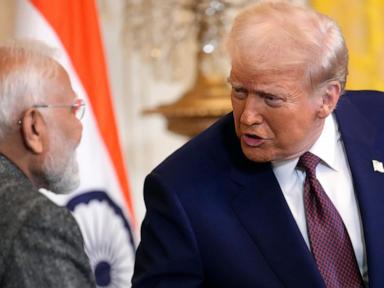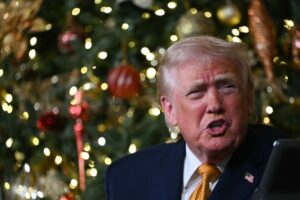
U.S. President Donald Trump has announced a significant escalation in tariffs on India, imposing an additional 25% tariff on Indian imports due to the country’s purchases of Russian oil. This brings the total tariffs levied by the United States on its ally to a steep 50%. India has labeled the tariffs as “unfortunate,” especially as the two nations work to finalize a trade deal that has faced persistent challenges since its inception earlier this year.
The announcement came on August 2, 2023, amidst ongoing trade negotiations that were initiated following a meeting between Indian Prime Minister Narendra Modi and Trump in Washington. Despite their historically warm relationship, trade tensions have recently flared, creating uncertainty regarding the future of U.S.-India economic ties.
Negotiations between the two countries began when Trump first imposed tariffs on other nations, including Canada, Mexico, and China, while initially sparing India. Despite calling India a “tariff king,” he had previously warned that high tariffs were on the horizon. Following the meeting between Modi and Trump, both leaders expressed optimism regarding a bilateral trade agreement, aiming to increase trade between the U.S. and India to $500 billion by 2030. However, details on how this ambitious target would be met remained vague.
In the following months, Piyush Goyal, India’s trade minister, travelled to Washington to engage in discussions with U.S. officials. During this period, U.S. Vice President JD Vance met with Modi in New Delhi, stating that progress was being made in the negotiations. Both sides appeared to finalize the terms for their trade discussions, inching closer to a potential agreement.
Despite these efforts, trade relations soured further when Trump publicly claimed to have halted military hostilities between India and Pakistan by offering trade concessions to both nations. This assertion angered Indian officials, who disputed Trump’s comments. Goyal continued to lead negotiations, asserting that India was prepared to make trade agreements that served its national interest but would not rush to meet arbitrary deadlines.
As discussions continued, Trump imposed the initial 25% tariffs on Indian imports, warning of further penalties if India did not change its purchasing behavior regarding Russian oil. He labeled India’s economy as “dead,” further straining relations. The additional 25% import taxes on India, prompted by its dealings with Russia, are set to take effect in 21 days.
The escalating tariffs signal a complex and tense relationship between the U.S. and India, two nations that have historically viewed each other as strategic partners in the Asia-Pacific region. As both countries navigate these economic challenges, the prospect of a comprehensive trade agreement hangs in the balance, leaving many to question the future of U.S.-India relations.






